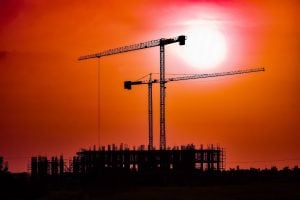Bharat vs India home loans: Why affordable segment needs more attention?

KV Prasad Jun 13, 2022, 06:35 AM IST (Published)
 Listen to the Article (6 Minutes)
Listen to the Article (6 Minutes)
Summary
Food, clothing, and shelter have been rightly stated as the three basic necessities of life. People especially those belonging to the low and middle-income sections of the society spend almost all their life’s earnings to gather enough corpus to build a house for themselves.
Food, clothing, and shelter have been rightly stated as the three basic necessities of life. People especially those belonging to the low and middle-income sections of the society spend almost all their life’s earnings to gather enough corpus to build a house for themselves.
In India, the concept of ownership of a house implies much more than just ‘a roof overhead’. Having a house is regarded as an essential part of the Indian socio-economic structure as it offers a means to both financial and emotional security. But, when it comes to the provision of housing as a basic amenity for the low-cost segment of society, there is a huge gap that needs to be bridged.
The government of India has focussed its efforts on making housing more affordable, accessible, and sustainable for its people in the low-cost segment in particular. The launch of ‘Pradhan Mantri Awas Yojana (PMAY)’ is synonymous with the efforts in that direction.
Through the ‘Housing for All’ scheme under the PMAY, the Government intends to provide around 30 million affordable ‘pucca’ houses by 2022. The PMAY also offers interest subsidies on home loans under its Credit Linked Subsidy Scheme (CLSS) that can be availed by aspirants belonging to the Economically Weaker Sections (EWSs), the Low-Income Groups (LIGs), and the Middle-Income groups (MIGs).
Banks with their traditional banking systems have always been more inclined towards providing high-ticket size loans and disbursing loans to the high-income segments in urban pockets, as they eye better returns from those. Just sample this data from the Reserve Bank of India (RBI), nearly 60 percent of home loans in India are disbursed in Delhi-NCR & Maharashtra alone.
In contrast, the loan applications of the low-income groups are usually rejected, citing varied concerns like the risk of default, low credit scores, etc. thus inhibiting the lower-income segment from utilizing their allied benefits.
As per data from the 2010 McKinsey Report, the demand for affordable housing has risen from 19 million in 2012 and is expected to reach 38 million by 2030. The CRIF report mentions a substantial percentage of this demand is expected to be driven by the low-income and mid-income segment notwithstanding; the supply is still bleak.
Quite a lot of factors play a major role in limiting financing opportunities for the Economically Weaker Sections and Low-Income Groups namely:
- Meagre savings to cover unforeseen risks
- Lack of substantial collateral
- Absence of land titles
- Financial illiteracy
- Informal occupation
- Low lending capacity
- Risk of payback
- Lack of access to credit
- Deficit of unsecured loans and more.
Additionally, the lack of basic amenities, job opportunities, essential services in the low- income group from rural India is leading to migration in the cities. The rapid urban crowding is further causing a huge deficit in affordable housing that is detrimental to the overall economic growth and development of the country as a whole. All in all, the low-income group suffers a hit both on the rural and urban front.
Banks, more often turn a deaf ear to the loan requirements of the low-income aspirants even if the latter is applicable for one. They are categorized as ‘risky’ due to higher chances of default. Cases of low-income loan applicants being involuntarily pushed over to take loans from the informal and unregulated financial sector at higher interest rates are also normal.
Lending rates can go as high and can range up to 18 percent to 25 percent for many low and middle income home loan applicants. Our observation so far has been that default rates are lower for such an income category, if robust fraud checks are in place, as home is the biggest asset this family has, and they are more credit conscious.
Keeping all these factors into consideration, it is evident that the traditional risk assessment route followed by the financial institutions is not in favor of the so-called high-risk segment. Looking at the ever-increasing demand for affordable housing fuelled by urban crowding and the need for better living, there has been a significant rise in the NBFCs, HFCs, and other private players that have shown interest to cater to the low and mid-market sections.
The traditional model of financing has minimal scope to effectively reach the bottom of the economic structure. The ongoing covid pandemic and smartphone penetration has taught the entire world the digital way of things. Especially post the pandemic, the financial institutions and lenders have shifted most of their processes including KYC, loan application, etc online.
The financial institutions must leverage this growing acceptance of digitization as it will lead to more penetration in the low-cost segment giving people more opportunities to access customized financial services which were difficult in traditional financing.
The collaboration of fintech with banking systems is evolving the financial ecosystem at a very fast pace. Through the Fintech evolution and integration, financial products can be tailored as per the need of the target market. FinTech is emerging as a blessing in disguise for the low-income sector providing them with affordable housing with great ease of access.
Furthermore, suggestions such as wavering off stamp duty by the NHB also help in promoting financial inclusion and give a kick to the affordable segment. The objective is to enhance the eligibility of the low-income segment by providing them with low-cost credit facilities.
With a larger percentage of the populace qualifying for credit, the country’s economy will also get a substantial boost. In conclusion, it will be beneficial for the entire economy if the Government and the private players in the financial sector continue to bring and implement innovative solutions and financial instruments to narrow the gap between Bharat loans and India loans so that in the near future, they would just be called loans.
The author, Atul Monga, is Co-founder and CEO at BASIC Home Loan. The views expressed are personal

Elon Musk forms several ‘X Holdings’ companies to fund potential Twitter buyout
3 Mins Read
Thursday’s filing dispelled some doubts, though Musk still has work to do. He and his advisers will spend the coming days vetting potential investors for the equity portion of his offer, according to people familiar with the matter

KV Prasad Journo follow politics, process in Parliament and US Congress. Former Congressional APSA-Fulbright Fellow










 Listen to the Article
Listen to the Article  Daily Newsletter
Daily Newsletter












